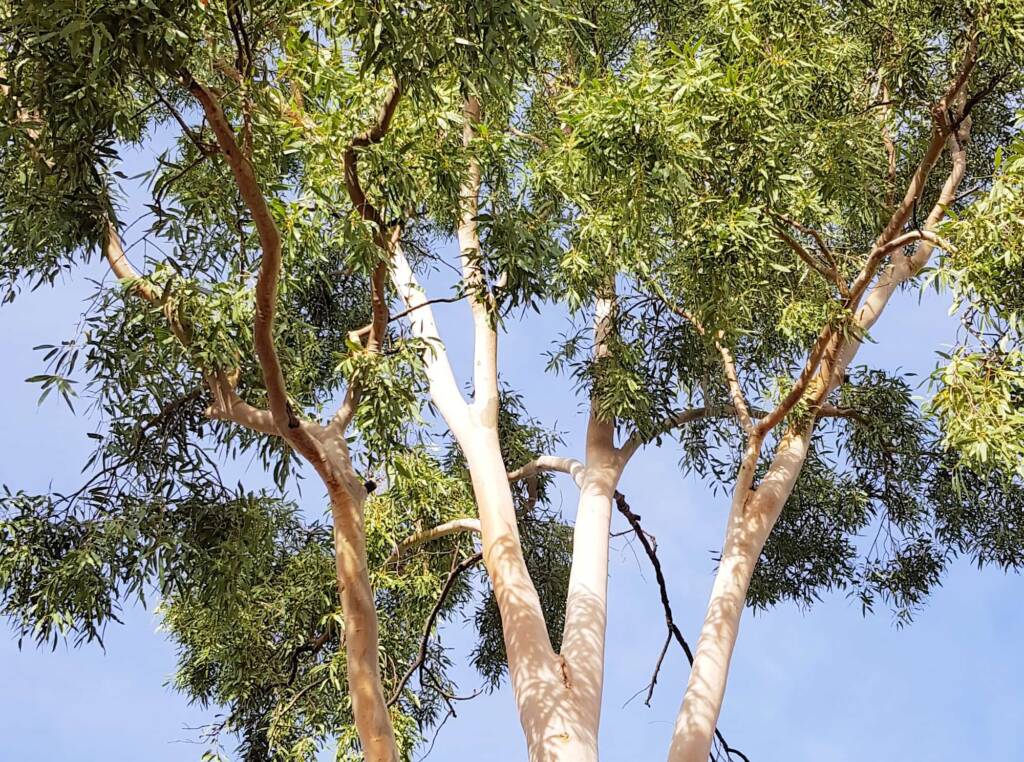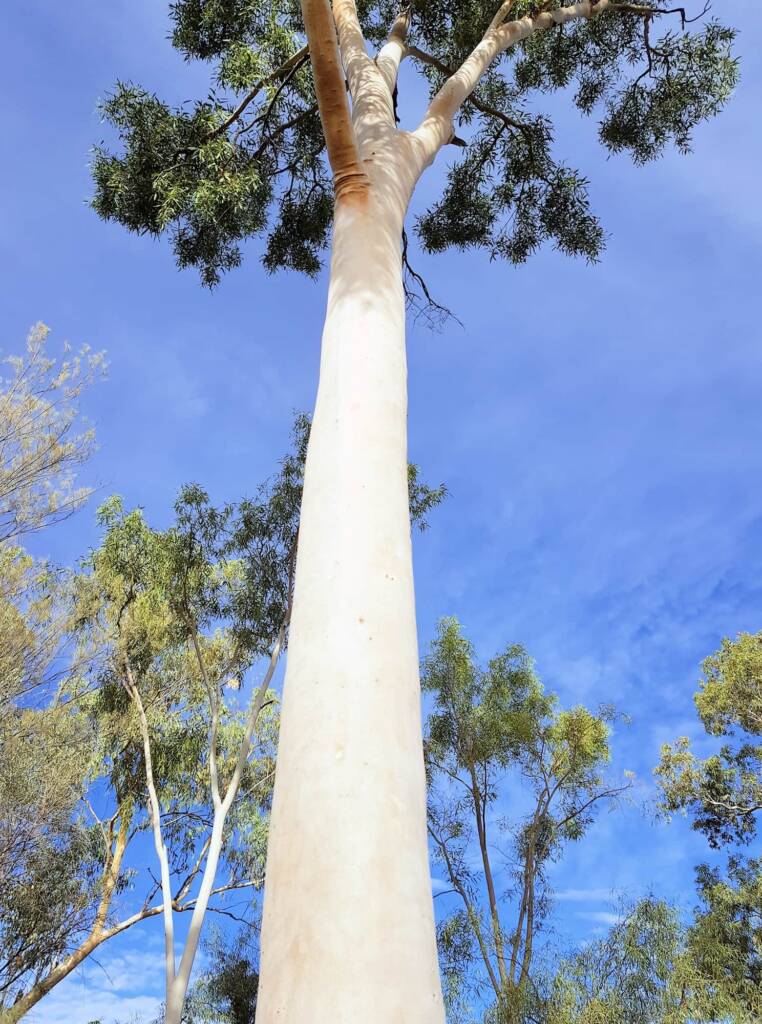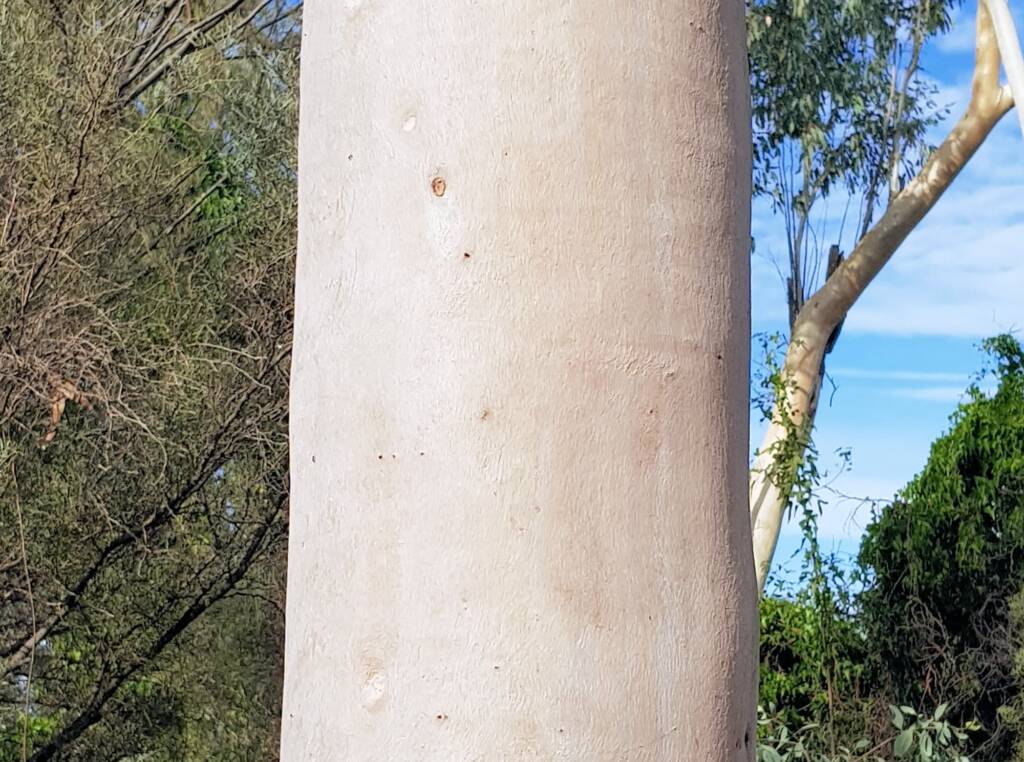Olive Pink Botanic Garden
OPBG FloraBean Tree Bush Hibiscus Bush Plum Caper Bush / Wild Passionfruit Dead Finish Ghost Gum Heart-leaved Frankenia Krichauff Ranges Fuchsia Mulga Needlewood Pink Fire-bush Potato Bush Prickly Wattle Red-Bud Mallee Shrubby Fox-tail (Ptilotus whitei) Sticky Hopbush (Dodonaea viscosa) Sturt’s Desert Rose Tall Saltbush Wild Tomato Wire-Leaf Mistletoe
Endemic to Central Australia and one of the iconic imagery of the central Australian arid outback, the Ghost Gum (Corymbia aparrerinja) is often found growing along the banks of dry creek and river beds, open woodland areas and up on the rocky slopes of gorges throughout the ranges of Central Australia.

All eucalypts are not Eucalpytus, as the term ‘eucalpyt’ refers to three closely-related genera of the family Myrtaceae – that includes Eucalyptus (approximately 758 species), Corymbia (approximately 93 species) and Angophora (approximately 10 species). All together, they are colloquially commonly called ‘gum trees’.
Eucalypt Discover Walk, Australian National Botanic Gardens, https://www.anbg.gov.au/gardens/visiting/exploring/walks/eucalypt-walk/

This elegant tree with its striking white bark is an iconic feature of rocky range country in Central Australia.
Arrernte people use its small branches to make splints to immobilize broken bones.
Other Aboriginal people used its resin to treat cuts and sores.






More information in our Flora index – Ghost Gum.
- Scientific classification
- Kingdom: Plantae
- Clade: Tracheophytes
- Clade: Angiosperms
- Clade: Eudicots
- Clade: Rosids
- Order: Myrtales
- Family: Myrtaceae
- Genus: Corymbia
- Species: C. aparrerinja
- Binomial name: Corymbia aparrerinja
OPBG FloraBean Tree Bush Hibiscus Bush Plum Caper Bush / Wild Passionfruit Dead Finish Ghost Gum Heart-leaved Frankenia Krichauff Ranges Fuchsia Mulga Needlewood Pink Fire-bush Potato Bush Prickly Wattle Red-Bud Mallee Shrubby Fox-tail (Ptilotus whitei) Sticky Hopbush (Dodonaea viscosa) Sturt’s Desert Rose Tall Saltbush Wild Tomato Wire-Leaf Mistletoe
